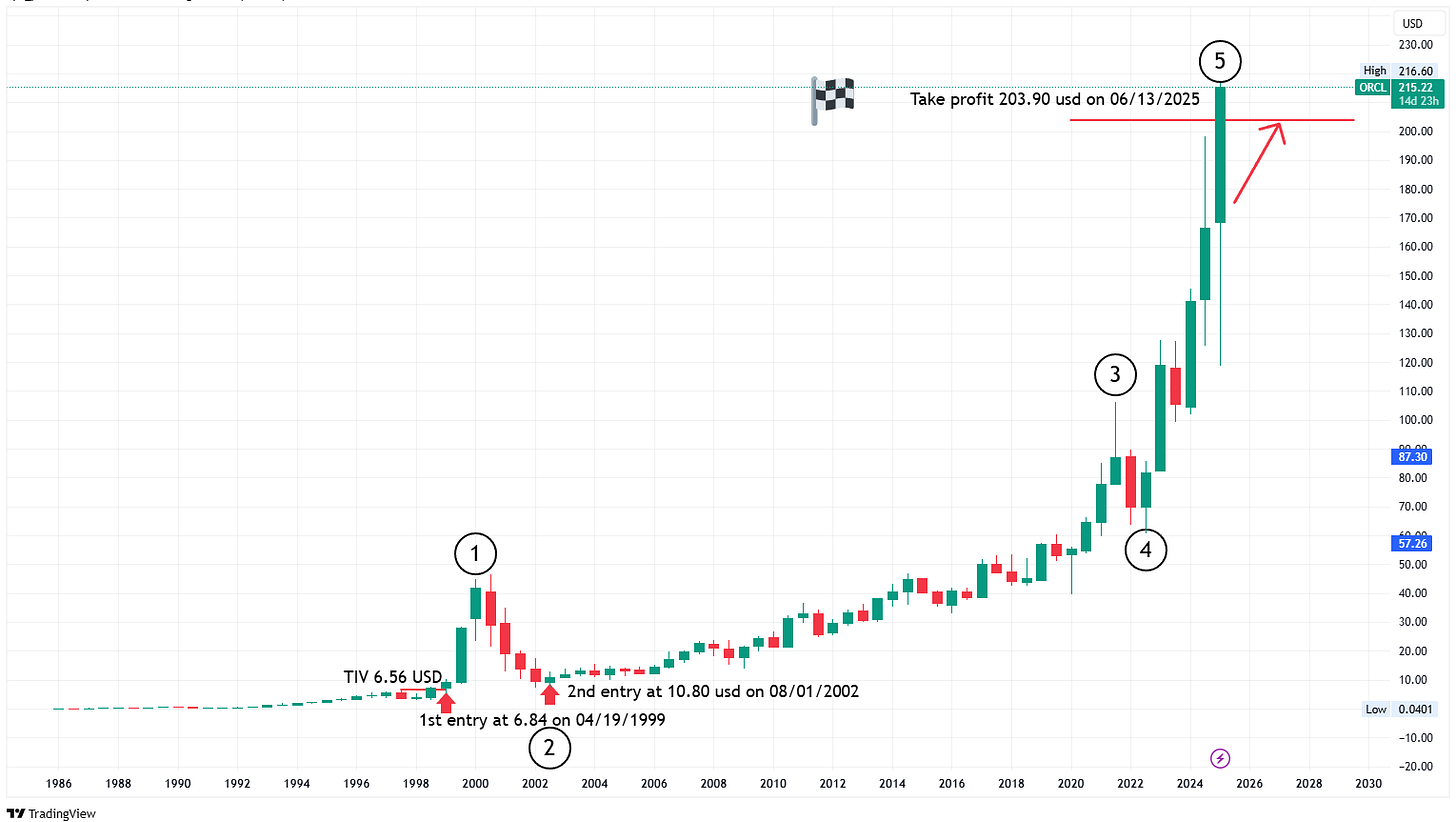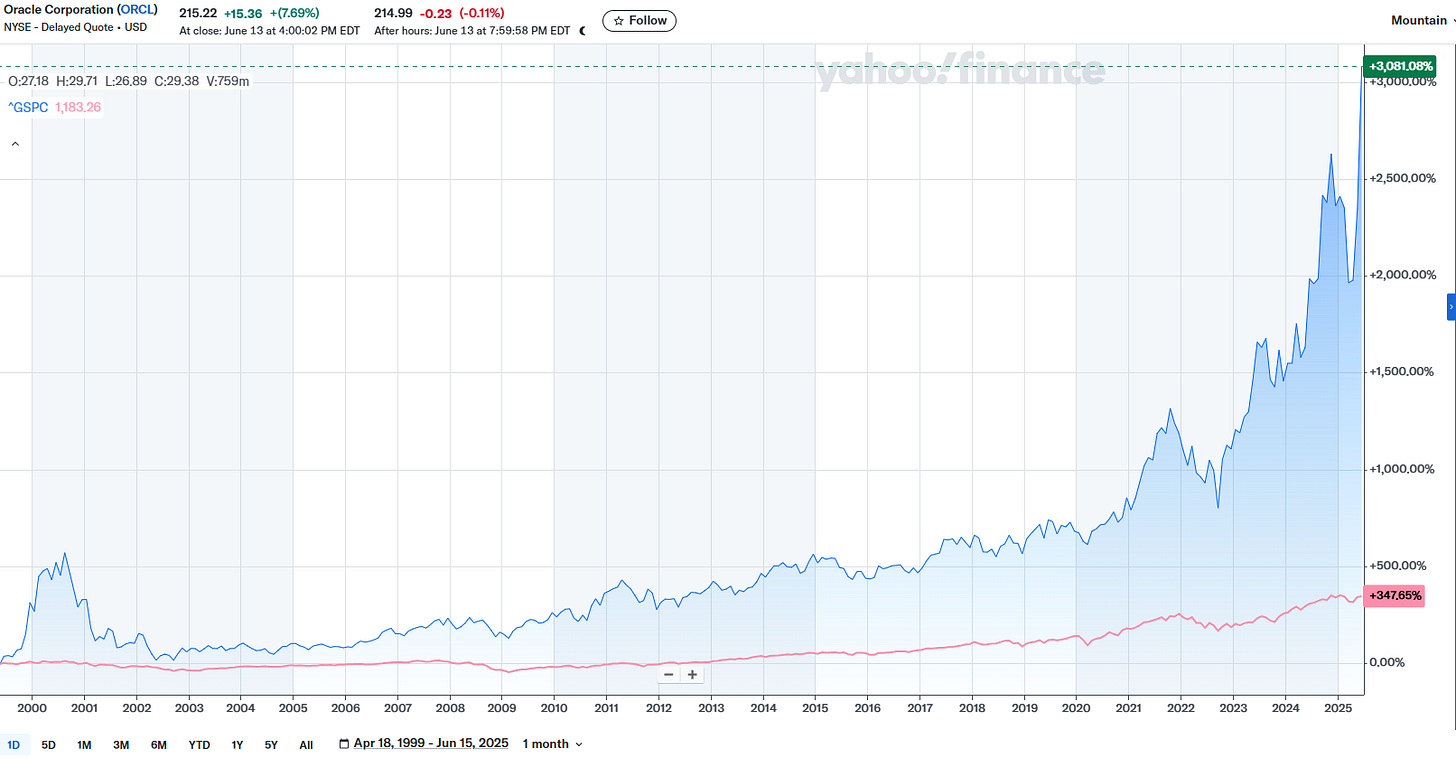The Final Stage: What Oracle’s Chart Tells Us About Market Cycles
A Real Example of How to Identify the End of a Trend Before It Breaks
📍Intro:
When people ask me how to know when to get out of a stock, I often reply:
“Watch the cycle — not the hype.”
Oracle just completed a textbook full cycle, and if you follow my approach, you’ll understand why you should have exited at 203.90 usd top of wave 5.
Last week, I published the full market cycle of Oracle.
In that analysis, I projected that the final stage — Wave 5 — would complete at $203.90 USD.
That level marked the top of the cycle, and the structure has since confirmed it.
📖 You can read the full article here:
Now that the cycle is complete, it’s time to update the chart and assess the trade.
Oracle ($ORCL) has officially completed its full 5-wave structure — just as projected, with Wave 5 topping at $203.90.
In this post, I’ll break down:
📊 How the updated chart looks post-peak
💰 The actual return on this investment
📈 How it compares to the S&P 500 over the same period
🔁 And what the cycle teaches us about timing entries and exits with precision
This is more than just a technical win — it’s a clear example of what happens when you follow the full cycle instead of chasing hype.
📖 Let’s dive into the results.
Technical Analysis
Market cycle applying TIV (Technical Intrinsic Value model)
Was Oracle a good investment?
1st entry 👌
ORCL return - 3.081,08 % CAGR (14.09%)
S&P 500 return - 347.65 %% CAGR (4.91%)
Duration of the investment 26 years
2nd entry 👌
ORCL return - 2.050,05 % CAGR (14.71%)
S&P 500 return - 555,64 %% CAGR (8.11%)
Duration of the investment 22 years
🧾 Conclusion: The Power of Full-Cycle Discipline
As I mentioned in the previous article about Oracle, whether you entered on the first entry or on the second, the result was exceptional — with returns that far outperformed the S&P 500 over the same period.
Now, with the position officially closed on June 13, 2025, some of you might ask:
“If we correctly predicted the top of Wave 5, why not open a short position?”
The answer is simple:
👉 I don’t short stocks.
And more importantly:
👉 Just because Wave 5 has peaked doesn’t mean the correction will begin immediately.
Instead, once the position is closed, I step aside. I don’t force trades. I wait patiently for the correction to unfold — which often takes time — and only after the next cycle begins to build will I consider a new entry.
That moment might be years away.
In the meantime, the proceeds from Oracle will be reallocated into the next opportunity — another stock that is either in early accumulation or building a new wave structure with asymmetric upside.
That’s the discipline of full-cycle investing.
That’s the core of my strategy.
Wishing you profitable decisions,
The Symphony of Stock Picking










